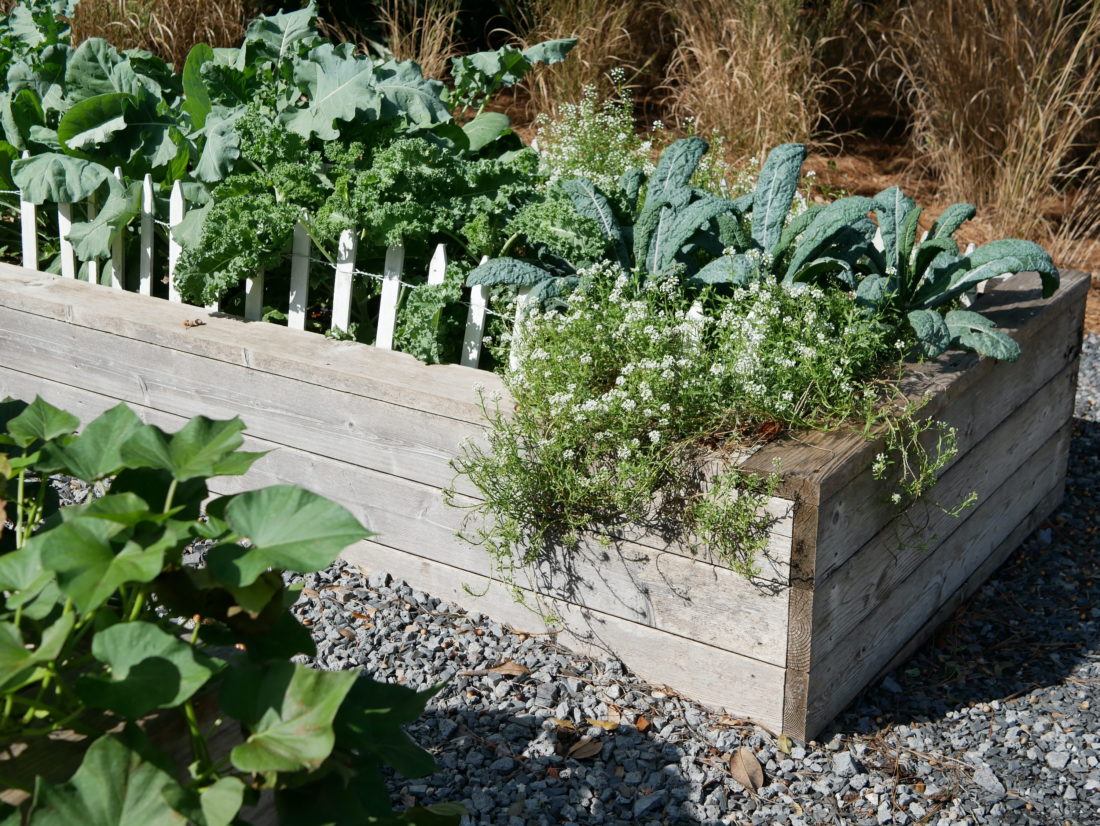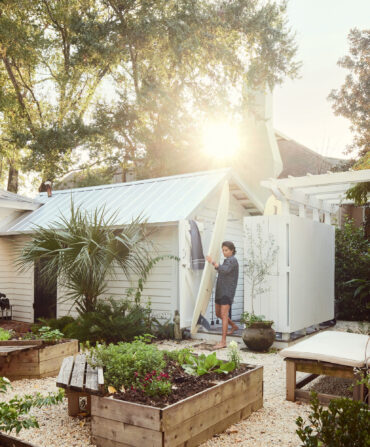If your once bright and productive summer garden is looking a bit haggard in the late summer heat, you’re not alone. “Garden burnout is totally normal this time of year,” says Rita Bachmann, owner of Rita’s Roots Backyard Harvest and the Garden Grower’s Club in Charleston, South Carolina. “Between the heat, excessive rain, pests, disease, and jungle gardens, it’s normal to feel overwhelmed. It’s also a great time to take a break and reset before fall.” Bachmann shared her secrets to squeezing the last bit of life out of your summer garden while prepping for cool-weather planting.
1. Pull up what’s spent but leave a few summer survivors.
Clean out things that have already produced and look ragged, like cucumbers, beans, melons, and tomatoes. “Keep the peppers, eggplant, okra, sweet potatoes, and any herbs, as they will produce until frost this fall,” Bachmann says. “Even if production has slowed, when temperatures cool, they will come to life again.”
2. Be patient.
While now is the time to plan and prep for your fall garden, Bachmann says it’s best to wait until mid to late September—when temperatures genuinely start to drop, and the danger of hurricane season has mostly passed—before sticking anything in the ground. (You can get away with seeding cucumber, beans, and summer squash in August, but only if you stay on top of pests and practice good crop rotation.) The good news is that once your fall garden is in, the mild Southern weather allows you to harvest through the winter.
3. Supercharge your soil.
“When we grow and harvest, the plants are removing nutrients from the soil,” Bachmann says. “The nutrients will need to be replaced before planting the next round of crops.” Start by digging around and pulling up any roots that have crept into the garden from nearby trees, which could rob your seedlings of nutrients and water. Next, add a few handfuls of worm castings to the soil to increase the beneficial bacteria and microbes and spread two to four inches of compost across the entire bed. One of Bachmann’s favorite tricks is to mix in ground crab shells. “Our native soils often have Southern root-knot nematodes [a parasitic garden pest] which can reduce yields and kill plants,” she explains. “By adding crab shell, we feed and nurture the beneficial organisms in the soil that also feed on the nematodes.”
4. Choose your fall garden stars.
Next comes one of the most important (and most fun) steps: gathering seeds and thinking about your garden’s layout. Consider planting a few early spring repeats like broccoli, turnips, and radishes. “Some of my favorite garden plants—celery, parsnips, and brussels sprouts—are planted only in the fall since they require a long, cool growing season,” Bachmann says. “Cilantro and spinach also grow far better when planted in the fall as they love cool weather and are incredibly cold tolerant.” Sugar snap peas and strawberries are two other options that are sometimes overlooked this time of year. No matter what you put in your patch, be sure to add a healthy scoop of all-purpose organic fertilizer to each hole before you put in the plant.
5. Get excited.
Spring and summer get a lot of the gardening glory, but in the South, fall is an incredibly productive and long growing season. “Fall gardening is simply my favorite time to grow,” Bachmann says. “The temperatures cool, the pests and disease subside, and the plant selection is supreme.”








